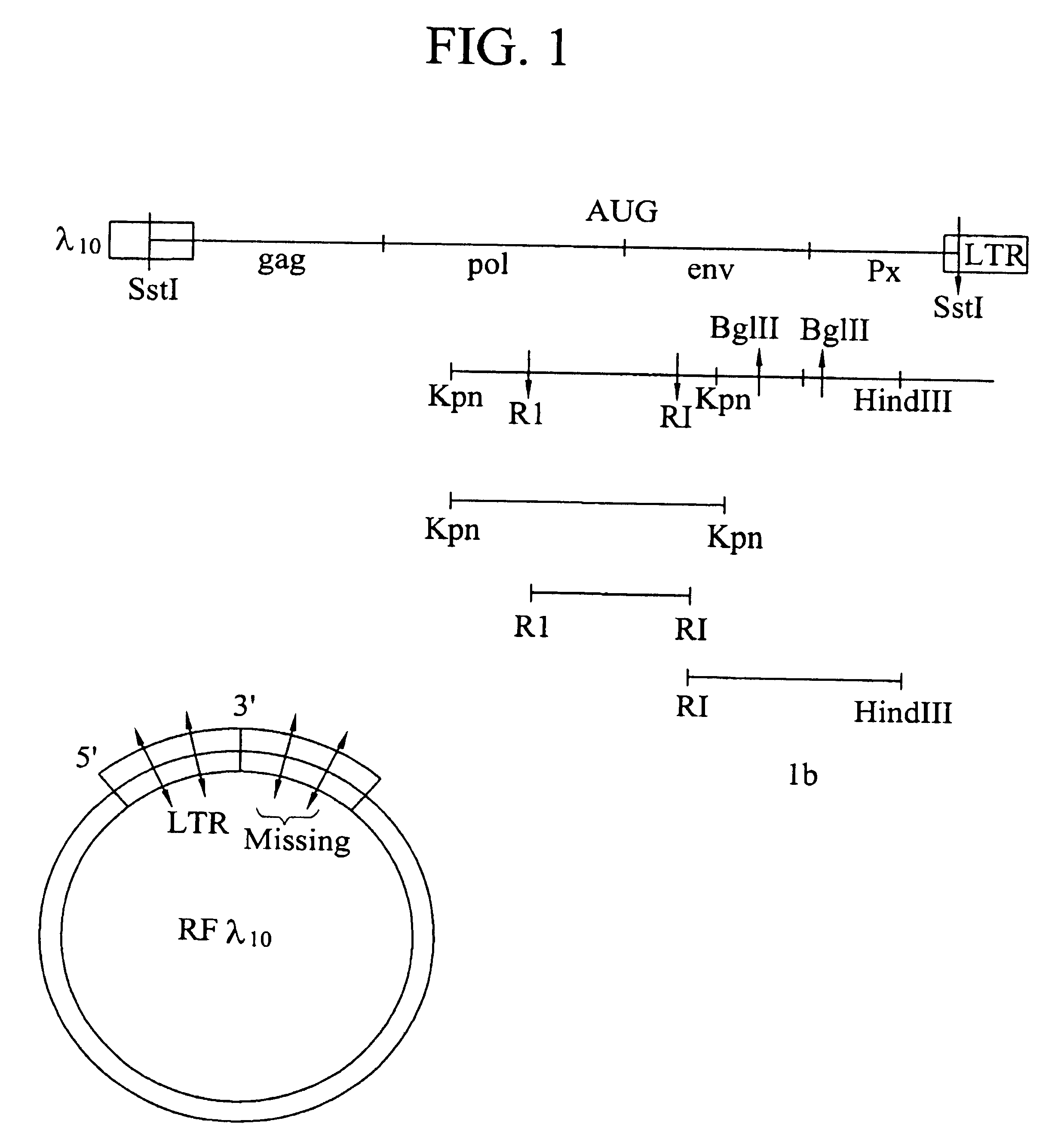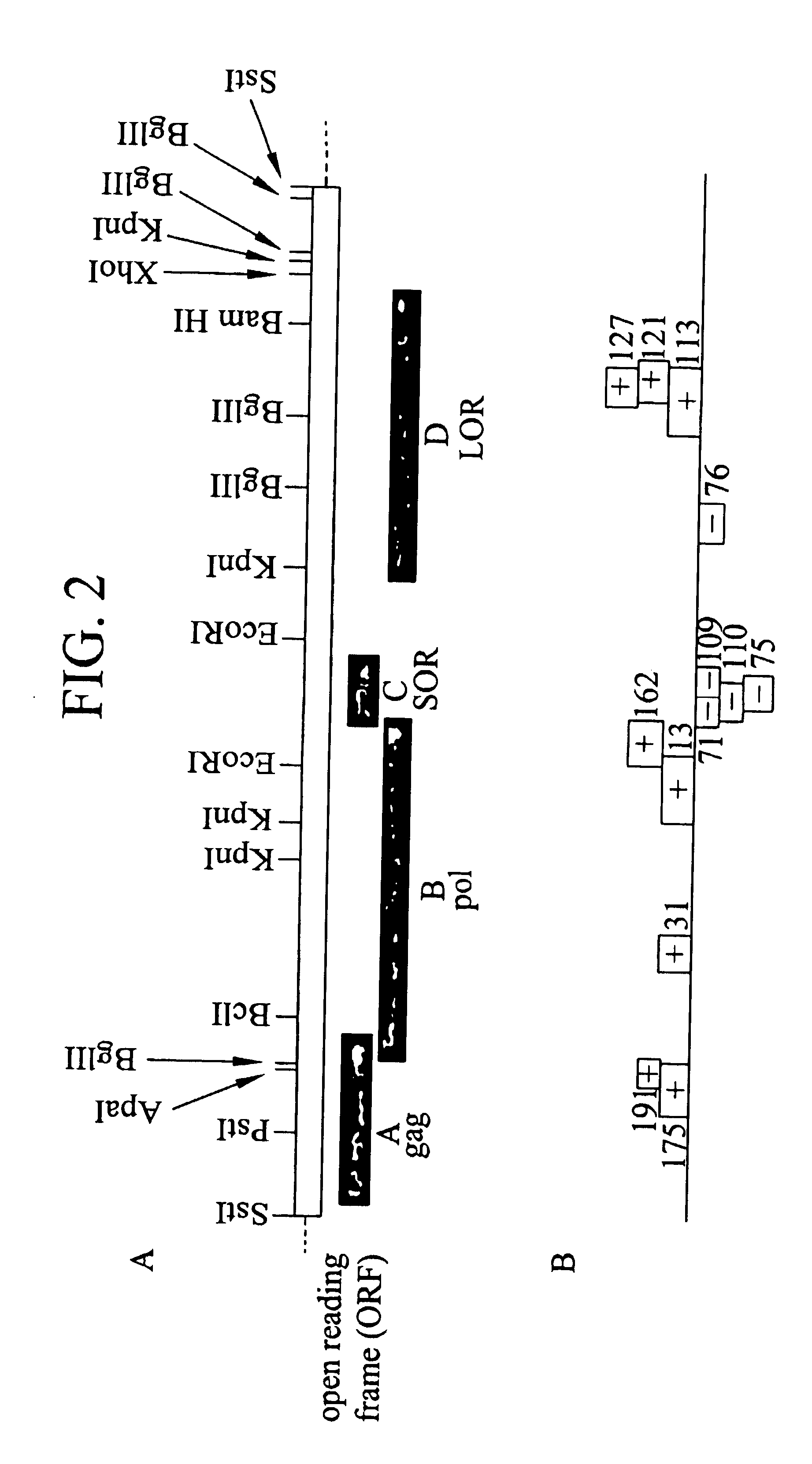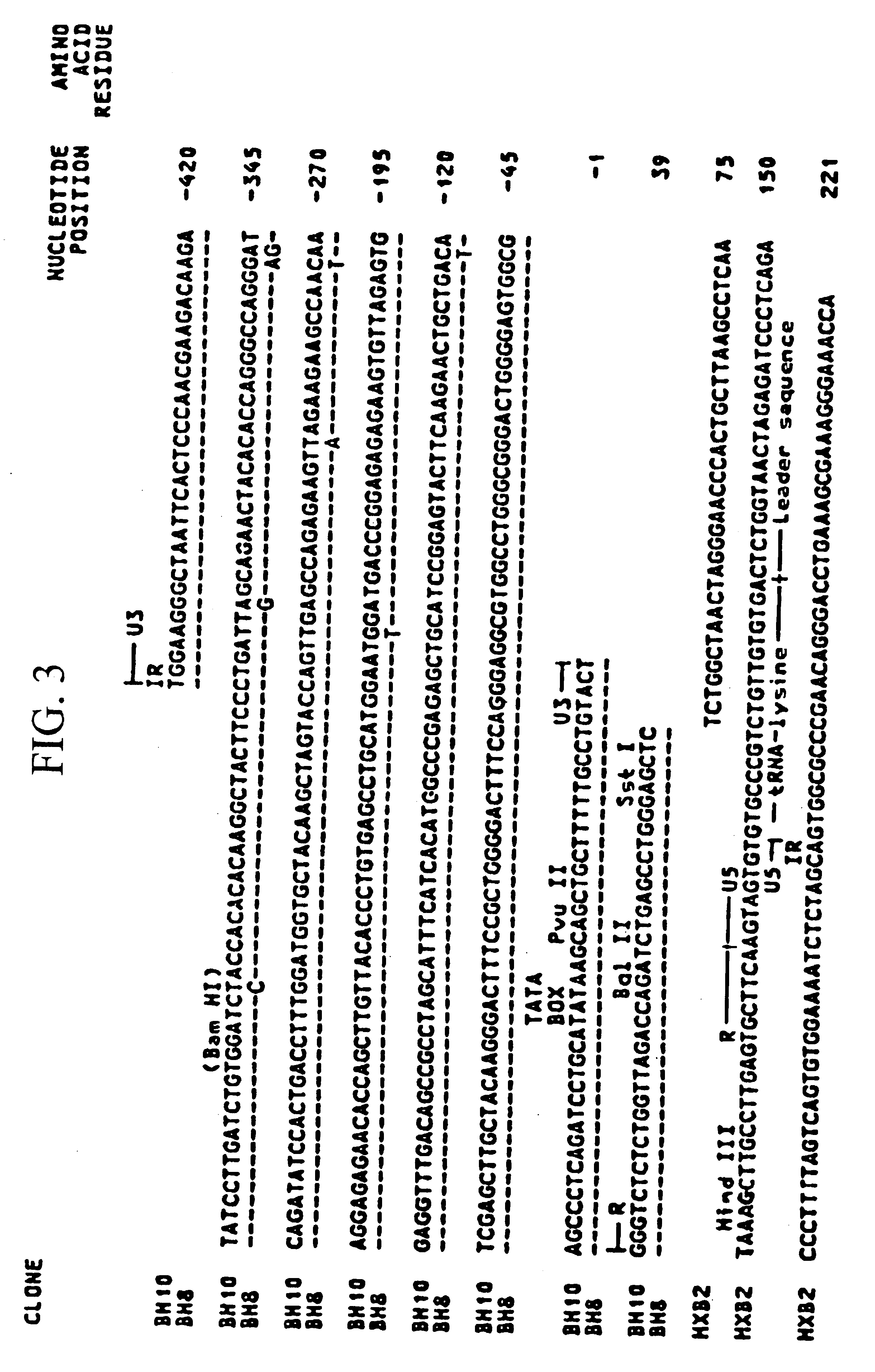Cloning and expression of HTLV-III DNA
a technology of human t cell leukemia and dna, which is applied in the field of molecular biology and virology, can solve the problems of not being able to predict who among them will develop the more serious symptoms, not being able to infect and transform t cells from normal umbilical cord blood and bone marrow in vitro, and being unable to prevent the transmission of the diseas
- Summary
- Abstract
- Description
- Claims
- Application Information
AI Technical Summary
Benefits of technology
Problems solved by technology
Method used
Image
Examples
example 1
Preparation of Sonicated DNA Fragments
[0065]10 μg of gel purified HTLV-III restriction fragments were sonicated to fragment size on average of 500 bps. After sonication, the DNA was passed through a DEAE-cellulose column in 0.1×TBE in order to reduce the volume. The DEAE-bound DNA was washed with 5 ml of 0.2 M NaCl-TE (2 M NaCl, 10 mm Tris HCl pH 7.5, 1 mM EDTA) and then eluted with 1 M NaCl-TE, and ethanol precipitated. The size range of the sonicated DNA was then determined on 1.2% agarose gel. DNA fragments of desired length (200-500 bps) was eluted from the gel. T4 DNA polymerase was used to fill in and / or trim the single strand DNA termini generated by the sonication procedure. DNA fragments were incubated with T4 polymerase in the absence of added nucleotides for five minutes at 37° C. to remove nucleotides from the 3′ end and then all 4 nucleotide precursors were added to a final concentration of 100 uM and the reaction mixture was incubated another 30 minutes to repair the 5...
example 2
Cloning of Random Sheared DNA Fragments
[0066]The sonicated blunt end repaired HTLV-III DNA fragments were ligated into the SmaI site of the ORF expression vector pMR100 and transformed into host cell LG90 using standard transformation procedures. B-galactosidase positive phenotype of the transformant were identified by plating the transformed cell on ampicillin (25 μg / ml) containing McConkey agar plates and scoring the phenotype after 20 hours at 37° C.
example 3
[0067]Ten milliliter samples of cells from an overnight saturated culture grown in L broth containing ampicillin (25 μg / ml) were centrifuged, the cell pellet was resuspended in 500 μl of 1.2 fold concentrated Laemmli sample buffer. The cells were resuspended by vortexing and boiling for 3 minutes at 100° C. The lysate was then repeated by being forced through a 22 gauge needle to reduce the lysate viscosity. Approximately 10 μl of the protein samples were electrophoresed in 7.5% SDS-PAGE (SDS-polyacrylamide) gels.
[0068]Electrophoretic transfer of proteins from SDS-PAGE gels to nitrocellulose paper was carried out according to Towbin et. al. After the transfer, the filter was incubated at 37° C. for two hours in a solution of 5% (w / v) nonfat milk in PBS containing 0.1% antifoam A and 0.0001% merthiolate to saturate all available protein binding sites. Reactions with AIDS antisera were carried out in the same milk buffer containing 1% AIDS patient antisera that ...
PUM
| Property | Measurement | Unit |
|---|---|---|
| pH | aaaaa | aaaaa |
| pH | aaaaa | aaaaa |
| pH | aaaaa | aaaaa |
Abstract
Description
Claims
Application Information
 Login to View More
Login to View More - R&D
- Intellectual Property
- Life Sciences
- Materials
- Tech Scout
- Unparalleled Data Quality
- Higher Quality Content
- 60% Fewer Hallucinations
Browse by: Latest US Patents, China's latest patents, Technical Efficacy Thesaurus, Application Domain, Technology Topic, Popular Technical Reports.
© 2025 PatSnap. All rights reserved.Legal|Privacy policy|Modern Slavery Act Transparency Statement|Sitemap|About US| Contact US: help@patsnap.com



